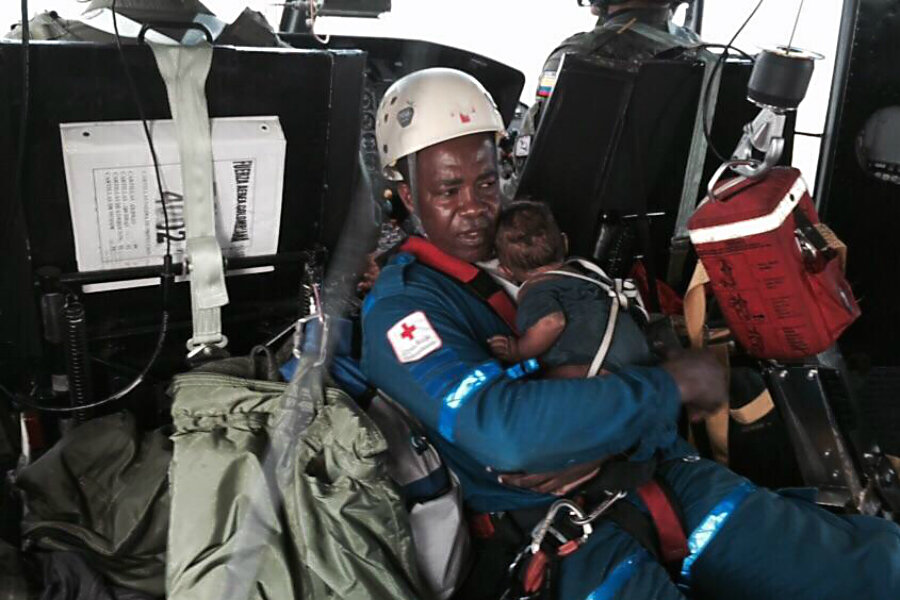How a mother and baby survived a plane crash in Colombian jungle
Loading...
A mother and her baby have been rescued alive, five days after a plane in which they were traveling crashed in the Colombian jungle.
Marinella Murillo, told reporters that she drank coconut water and ate leaves in order to survive and breastfeed her five-month-old son Yudier Moreno.
Afraid the plane would explode, she left the crash site and walked along a river looking for help.
"I had to go into the river to drink water, and I went along with the river, and I got to a point where it was really high and I couldn't go through," she told reporters.
The twin-engine Cessna 303 plane, which was carrying fish and coconuts, had been flying from Quibdó, the capital of Chocó region in the west of the country, to the Pacific coastal town of Nuquí. It disappeared 20 minutes into the flight on June 20. A search and rescue operation was launched right away.
The wreckage was found on June 22 by rescuers from the Colombian Air Force and relief agencies. The body of the plane’s pilot was found inside.
The rescue team said it had high hopes that there were survivors after finding the cabin door open and clues, such as cell phones, a flip-flop and toys in the dense forest.
A 14-man team searched the jungle for survivors for three days without finding anyone, then resorted to using loudspeakers to broadcast their presence.
Murillo and her son were found on the banks of a river about 500 meters from the crash site after she heard her name being called and started to make her way back to the plane.
Local authorities described the survival of Murillo and her son as remarkable.
"It's a miracle. It is a very wild area and it was a catastrophic accident," Colonel Hector Carrascal, commander of the Colombian Air Force in Antioquia department, told AFP.
Murillo was taken to a hospital, where she is in stable condition with some injuries. Her son was unharmed.
“His mother’s spirit must have given him strength to survive,” the Colombian Air Force said in a statement.
The story, while beyond human expectation, is not the only one of its kind. Other people have managed to survive fatal plane accidents and nights in the wilderness.
Early this year, a 7-year-old girl survived a plane crash that killed her family in Kentucky. She walked three-quarters of a mile in the dark to safety.
In 1971, a 17-year-old young woman survived for 10 days in the Peruvian rainforest after lightning struck her flight, causing it to explode. She walked for days, fighting mosquitoes and hunger before she was rescued.
A 14-year-old survived a plane accident in 2009 after it nosedived out of the sky and crashed in the Indian Ocean. Barely able to swim and with no life vest she clung to a piece of wreckage for hours until found by rescuers.
Reports say Murillo and her son were the sole passengers on the flight. The cause of the accident has not been determined so far.







